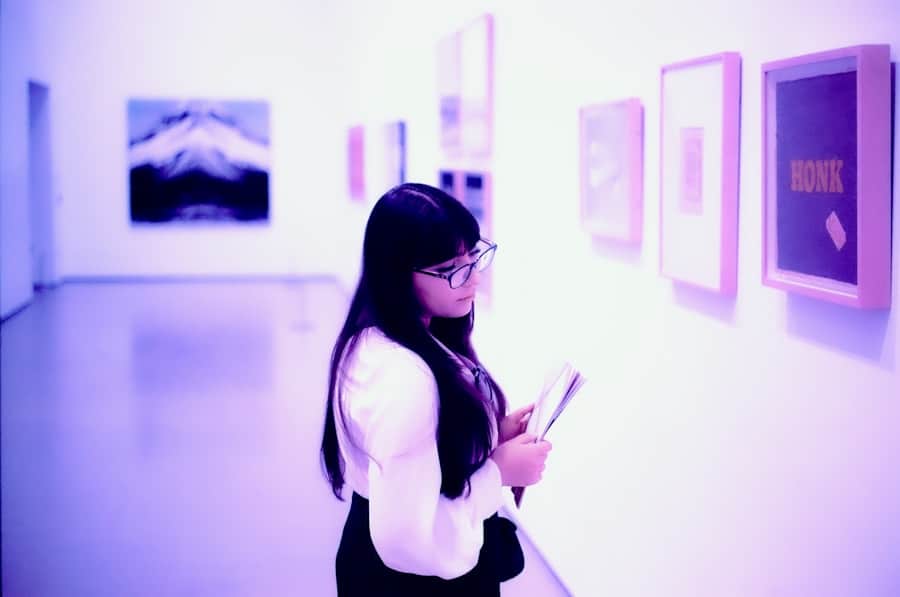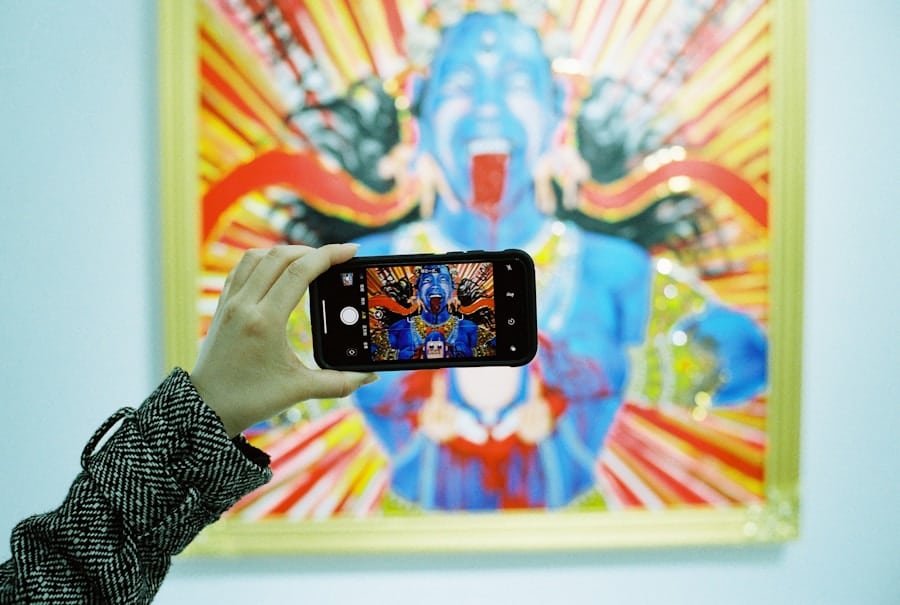The advent of digital technology has revolutionized the art world, giving rise to virtual galleries and performances that transcend geographical boundaries. These platforms allow artists to showcase their work to a global audience, breaking down the traditional barriers associated with physical exhibitions. Virtual galleries provide an immersive experience where viewers can explore artworks in a 3D environment, often enhanced by interactive features that engage the audience in ways that conventional galleries cannot.
This shift not only democratizes access to art but also opens up new avenues for artists to connect with their audience, fostering a more inclusive art community. As the world becomes increasingly interconnected through the internet, the concept of virtual performances has also gained traction. Artists can now present their work live from anywhere in the world, reaching audiences who may not have the opportunity to attend in-person events.
This evolution has been particularly significant in the wake of global events that have restricted physical gatherings, prompting a surge in online art experiences. The flexibility and accessibility of virtual platforms have made them an essential component of contemporary artistic expression, allowing for innovative collaborations and creative experimentation that were previously unimaginable.
Key Takeaways
- Virtual galleries and performances offer a new and innovative way to experience and showcase art and performances.
- Selling artwork through virtual galleries provides artists with a global audience and the opportunity to reach a wider market.
- Hosting virtual art shows and events allows for greater accessibility and inclusivity, reaching a larger and more diverse audience.
- Monetizing virtual performances can be achieved through ticket sales, sponsorships, and partnerships with brands.
- Collaborating with brands and sponsors for virtual events can provide artists and performers with additional revenue streams and exposure.
Selling Artwork Through Virtual Galleries
Empowering Artists
This shift has empowered artists to take control of their sales processes, fostering a sense of independence and entrepreneurship. Moreover, virtual galleries often incorporate e-commerce functionalities that streamline the purchasing process.
Enhancing the Buying Experience
Buyers can view high-resolution images of artworks, read detailed descriptions, and even visualize how a piece might look in their own space through augmented reality features. This level of interactivity enhances the buying experience, making it more engaging and informative.
Expanding the Art Market
The ability to reach a global audience also means that artists can tap into new markets, expanding their customer base beyond local collectors. Virtual galleries can host limited-time exhibitions or themed shows that create a sense of urgency among collectors, encouraging them to make purchases before a piece is no longer available.
Hosting Virtual Art Shows and Events
Virtual art shows have emerged as a dynamic way for artists to present their work while engaging with audiences in real-time. These events can take various forms, from live-streamed gallery tours to interactive Q&A sessions with artists. By leveraging social media platforms and video conferencing tools, artists can create immersive experiences that allow viewers to connect with their work on a deeper level.
For instance, an artist might host a live painting session where they demonstrate their techniques while discussing their creative process, inviting viewers to ask questions and share their thoughts. The flexibility of virtual events also allows for innovative formats that can cater to diverse audiences. For example, an artist could collaborate with musicians to create a multimedia performance that combines visual art with live music, enhancing the overall experience for attendees.
Additionally, virtual art shows can be recorded and archived, providing lasting access to those who may have missed the live event. This not only extends the reach of the exhibition but also creates opportunities for ongoing engagement with the audience through follow-up discussions or additional content related to the show.
Monetizing Virtual Performances
Monetizing virtual performances presents unique opportunities for artists to generate income while showcasing their talents. One common approach is through ticket sales for live-streamed events, where audiences pay to gain access to exclusive performances or behind-the-scenes content. This model allows artists to create a direct revenue stream while offering fans an intimate experience that fosters a deeper connection with their work.
Additionally, platforms like Patreon enable artists to offer subscription-based content, providing fans with ongoing access to new performances and exclusive materials. Sponsorship deals also play a crucial role in monetizing virtual performances. Artists can partner with brands that align with their artistic vision or values, creating mutually beneficial collaborations that enhance the overall experience for audiences.
For instance, an artist might collaborate with a tech company to showcase innovative tools used in their creative process during a live performance. This not only provides financial support for the artist but also introduces audiences to new products and services that complement their artistic journey. Furthermore, merchandise sales during virtual events can serve as an additional revenue stream, allowing fans to purchase items related to the performance or artwork being showcased.
Collaborating with Brands and Sponsors for Virtual Events
The intersection of art and commerce has become increasingly prominent in the realm of virtual events, as artists seek partnerships with brands and sponsors to enhance their visibility and financial sustainability. Collaborations can take many forms, from co-branded events to sponsored content that aligns with an artist’s aesthetic or message. For example, an artist might partner with a fashion brand for a virtual runway show that incorporates their artwork into the clothing designs, creating a unique fusion of visual art and fashion.
These partnerships not only provide financial backing but also expand an artist’s reach by tapping into the brand’s existing audience. By aligning with companies that share similar values or target demographics, artists can cultivate new relationships with potential fans and collectors.
The key to successful collaborations lies in authenticity; both parties must ensure that the partnership feels organic and resonates with their respective audiences.
Creating Exclusive Content for Virtual Platforms
Deepening Viewer Connections
Artists can leverage various formats such as tutorials, behind-the-scenes footage, or personal stories about their creative journeys to engage viewers on a deeper level. For instance, an artist might produce a series of short videos documenting the evolution of a particular piece from concept to completion, offering insights into their techniques and thought processes along the way.
By offering unique digital pieces that cannot be replicated, artists can create scarcity and drive demand among collectors.
Fostering Community Engagement
Furthermore, hosting interactive workshops or masterclasses allows artists to share their skills while generating income through participant fees. This not only diversifies revenue streams but also fosters community engagement as participants connect over shared interests in art.
Utilizing Virtual Reality Technology for Art Exhibitions
Virtual reality (VR) technology has emerged as a groundbreaking tool for enhancing art exhibitions by providing immersive experiences that transport viewers into entirely new worlds. Artists can create VR environments where audiences can explore their work in 360 degrees, allowing for a level of engagement that traditional galleries cannot replicate. For example, an artist might design a VR installation that simulates walking through a dreamscape filled with their creations, inviting viewers to interact with the environment in real-time.
The use of VR technology also opens up possibilities for collaborative exhibitions that bring together multiple artists in a shared virtual space. This approach allows for innovative curatorial practices where artworks can be juxtaposed in ways that challenge conventional narratives or themes. Additionally, VR exhibitions can be accessed from anywhere in the world, making art more accessible than ever before.
As technology continues to evolve, the potential for VR in the art world will likely expand further, offering new ways for artists to connect with audiences and push the boundaries of creative expression.
Building a Sustainable Business Model for Virtual Artistic Endeavors
Creating a sustainable business model for virtual artistic endeavors requires careful planning and strategic thinking. Artists must consider various revenue streams beyond traditional sales of artwork or performances. Diversifying income sources is crucial; this could include offering online courses, selling merchandise related to their work, or engaging in sponsorship deals as previously mentioned.
By developing multiple avenues for income generation, artists can mitigate risks associated with fluctuations in any single revenue stream. Moreover, building a strong online presence is essential for attracting audiences and potential buyers. Artists should invest time in cultivating their social media profiles and engaging with followers through regular updates about their work and upcoming events.
Email newsletters can also serve as effective tools for maintaining communication with fans and collectors while providing exclusive content or early access to new releases. By fostering a loyal community around their work, artists can create a sustainable ecosystem that supports their creative endeavors over time. In conclusion, as virtual galleries and performances continue to reshape the art landscape, artists have unprecedented opportunities to connect with audiences and monetize their work in innovative ways.
By embracing technology and exploring new business models, they can navigate this evolving environment while remaining true to their artistic vision.
Artists looking to monetize their virtual galleries and performances may also benefit from utilizing the best software for presentations in 2023. This article provides valuable insights into the top software options available for creating engaging and professional presentations, which can be a useful tool for artists looking to showcase their work in a virtual setting. By incorporating effective presentation software, artists can enhance the visual appeal of their virtual galleries and performances, ultimately attracting more viewers and potential buyers. For more information on the best software for presentations, check out this article.
FAQs
What are virtual galleries and performances?
Virtual galleries and performances are artistic exhibitions and shows that take place in a digital space, such as a website, virtual reality platform, or live streaming platform. These events allow artists to showcase their work and connect with audiences online.
How are artists monetizing virtual galleries and performances?
Artists are monetizing virtual galleries and performances through various methods, including selling digital artwork, offering virtual tours or experiences for a fee, hosting ticketed live streaming events, and selling merchandise related to their virtual exhibitions or performances.
What are some popular platforms for hosting virtual galleries and performances?
Popular platforms for hosting virtual galleries and performances include websites like Artsteps and Kunstmatrix for virtual exhibitions, as well as live streaming platforms like Twitch, YouTube, and Instagram for virtual performances and events.
What are the benefits of monetizing virtual galleries and performances for artists?
Monetizing virtual galleries and performances allows artists to reach a global audience, overcome physical limitations of traditional art spaces, and generate income from their work without the need for a physical gallery or venue. It also provides opportunities for innovative and interactive experiences for audiences.



